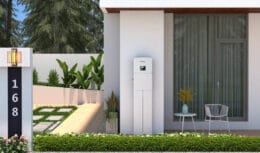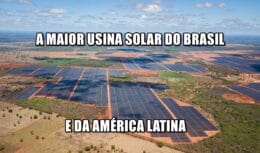
Hydroelectric power plants have a smaller “carbon footprint” than wind, solar and gas thermal power plants, in addition to offering the lowest overall cost in the electricity sector.
A Law 14.182 / 2021, which deals with the privatization of Eletrobras, established the mandatory contracting of energy from hydroelectric plants in the A-5 and A-6 auctions, with the need to contract 50% of the demand declared by the distributors, until reaching 2 thousand MW in the period from 2021 to 2026, with energy delivery beginning in 2026. However, the A-5 auction, held on September 30 of this year, left Small Hydroelectric Power Plants (PCHs) out of the bidding process.
Read also
- Divestments by Petrobras in the pipeline segment, Pre-salt and the New Natural Gas Law generate opportunities, attract investments and growth in the pipeline sector in Brazil
- Light, together with a consortium of organizations from the United Kingdom, takes a clean energy project and donates a solar panel kit for homes in Baixada Fluminense, in RJ
- Even with the high dollar, fuel prices plummeted, reaching R$ 1,98 per liter of ethanol at the beginning of the pandemic, but it did not work and the consumer suffers from constant shots
- Global wind turbine giants Vestas and Siemens Gamesa become victims of their own success
The National Congress idealized the participation of PCHs in auctions with the objective of correcting: (i) the problems caused to the electric sector and the consumer by the very low hiring of hydroelectric plants in the last 20 years, especially of PCHs and CGHs that, from 2005 to 2018 , was less than 2% of the total; and (ii) the damage caused to the PCHs and CGHs sector by the lack of isonomy with other renewable sources and with fossil sources, which created artificial disadvantages against PCHs and CGHs.
The measure works as a kind of bridge until the main problems faced by the sector are corrected.
For Paulo Arbex, president of the Brazilian Association of PCHs and CGHs (ABRAPCH), this measure works as a kind of bridge until the main problems faced by the sector are corrected: (i) taxation of its production chain up to 38% higher than that of other renewable energy sources, (ii) requirements for environmental compensation at a cost 30% higher than that of its competitors, (iii) tax exemptions and waivers of more than R$98 billion/year for fossil fuels, (iv) absence of remuneration for ancillary services provided by PCHs and CGHs, (v) apportionment of network costs disproportionate to use, (vi) use of MRE hydroelectric reservoirs to solve problems of third parties (often their competitors), for which they were not designed and which do not concern them .
Hydroelectric plants offer the most efficient way to generate electricity, the cleanest, cheapest and safest way to store energy in the form of water in their reservoirs, they are the most renewable among all renewables (according to the UN IPCC), they have the lowest “carbon footprint” of the electricity sector (1/3 of wind, 1/12 of solar and 1/115 of gas thermal), and offer the lowest overall cost in the electricity sector.
The construction of this type of plant takes around one to one year and a half to start operating, while thermal plants can take up to 5 years in A-3, A-5 auctions. Arbex believes that the country's competitive advantage to avoid having a water crisis is to build more reservoirs to satisfactorily scale water storage during the rainy season.
More developed countries like Germany and Norway prioritized hydroelectric power plants before resorting to more expensive alternatives.
That is why the most developed countries have prioritized hydroelectric plants before resorting to more expensive, less efficient or more polluting alternatives.
“In Germany, a country with an area equivalent to half the state of Minas Gerais and where the green party is stronger, hydroelectric plants have the status of a national strategic priority. While Germany, with 7.200 hydroelectric dams, is still trying to make others viable with the support of the Green Party. Brazil, with only 1.500, is debating whether it already has too many hydroelectric plants. It becomes surreal”, comments Arbex.
“Norway, the 3rd largest exporter of gas in the world and 12th of oil, generates 94% of its electricity through hydroelectric plants and has never had any problem with supply or rationing of electricity. The difference? Norway took the decision to supply its internal market with clean, cheap, safe and reliable energy from hydroelectric plants and, unlike Brazil, encouraged the source, instead of penalizing it. It exports its oil and gas and supplies its population with hydroelectricity. Brazil should do the same. Export pre-salt oil and gas instead of burning it to generate electricity and supply the domestic market with a combination of renewable sources: hydroelectric, biomass, wind and solar. Brazil needs to maximize its wealth, monetizing both the wealth of its hydraulic potential and its oil reserves, instead of allowing one wealth to cannibalize the other”, concludes Arbex.









